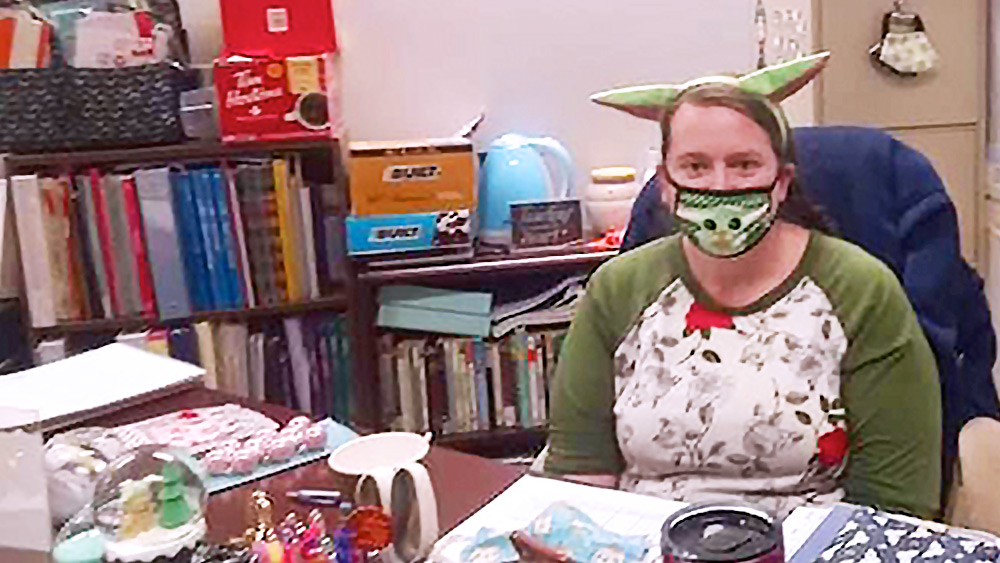
Erica Schabert, a private school teacher, is committed to helping her middle school students gain a deeper understanding of math and science. However, like many educators and campuses around the country, the Pennsylvania teacher has limited financial resources to spend on professional development due to the economic downturn caused by the COVID-19 pandemic.
Fortunately, the Hope Lutheran Christian School teacher learned about the STEM 4 Innovation Conference, hosted by Texas A&M University’s College of Engineering. Thanks to a generous contribution from Chevron, this event, which was held virtually Jan. 11-12, was free for all participants and will continue to be available through July 13 to any PK-12 teacher on-demand.
A total of 576 teachers registered for the conference, which is a 218% increase from the 2020 face-to-face event held in College Station. By offering this conference virtually, the College of Engineering was able to reach 416 first-time attendees, including educators from 44 U.S. states and 13 countries.
Schabert, who was one of those first-time attendees, came away impressed. “It was the best professional development I’ve seen in a long time,” she said. “Everybody was willing to share, and the conference had such an open and warm environment.”
Deep roots in STEM
The STEM 4 Innovation Conference has a long and rich history that goes back to 2008. Previously offered as a face-to-face conference in College Station, the event brings teachers together to learn about innovative STEM (science, technology, engineering and math) strategies and tools that they can immediately utilize in the classroom. In addition, conference coordinators take advantage of Texas A&M’s designation as a tier-one research institution to create a unique attendee experience that includes interactions with world-class researchers.
The emergence of COVID-19 forced conference coordinators to rethink the event, leading to the decision to go virtual. Still, the interactive conference continued to offer expert presentations, resources, chat rooms and exhibits. “The virtual experience was great,” said Christina Campos, a first-time attendee who teaches at West Oso Junior High in Corpus Christi. “It felt like we were in person, except without any walking.”
The 2021 conference continued to tap expertise from across Texas A&M’s campus. Workshops, presentations and exhibits were offered by faculty from the College of Engineering, the College of Science, College of Education and Human Development, College of Geosciences, College of Agriculture and Life Sciences, College of Veterinary Medicine and Biomedical Sciences, Texas A&M Forest Services and Texas A&M University at Galveston.
Four interactive workshops were designed to give teachers a better understanding of the engineering process. For example, one session, taught by experts from the College of Agriculture and Life Sciences, asked participants to brainstorm a new food product, pitch it to consumers and investigate bringing the product to market. Another session, organized by the College of Education and Human Development, encouraged teams of teachers to design a functional and aesthetically pleasing office that was economical while also meeting social distancing requirements.
Breakout sessions also were offered. These sessions, which addressed a variety of topics that focused on either elementary or middle/high school level needs, included “Jobs of the Future: Exploring STEM Careers in Natural Resources with Project Learning Tree’s Green Jobs Guide,” “Bringing the Great Outdoors Indoors through Virtual Field Trips,” “STEM Challenges Using Sphero Robotics” and “Critical PreCollege STEM Knowledge.”
The virtual conference created an environment where teachers, who feel especially isolated and stressed during the pandemic, could connect to each other and find help. “This conference has opened my eyes beyond anything I can even imagine,” said Campos. “I am the STEM coordinator, and I was struggling to get resources. But this conference enabled me to sit in the comfort of my home and meet some amazing people.”
Conference coordinators believe that 2021’s virtual experience offers lessons that will be incorporated into future STEM 4 Innovation conferences. “This has helped people realize that you can have some authentic learning experiences virtually,” said John Peterson, conference coordinator and associate director of the College of Engineering’s Spark! PK-12 Engineering Education Outreach. “Many people still prefer face-to-face, but maybe we can plan some hybrid version of the conference for the people from California, Pennsylvania or Australia who can’t travel to Texas A&M for two days.”
Participants left the conference feeling very motivated to bring what they learned into the classroom and to continue their relationship with Texas A&M. “I fell in love with everything I saw: wonderful research possibilities, great projects, equipment, friendly staff and outreach programs.” said Georgina Grillo, a secondary teacher at Golden Valley School in Heredia, Costa Rica, who already plans to attend the 2022 conference. “The conference made me wish that I could go back to college at Texas A&M's College of Engineering.”